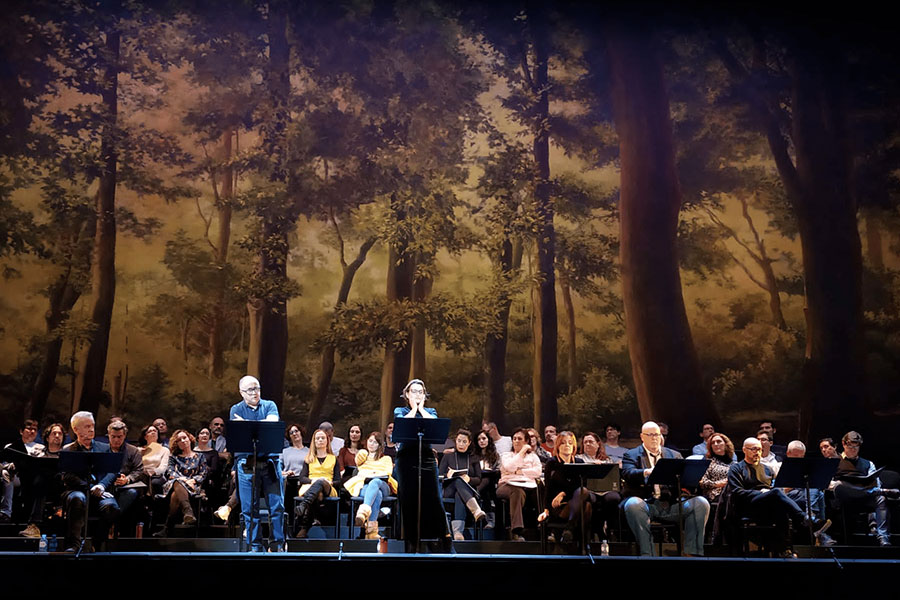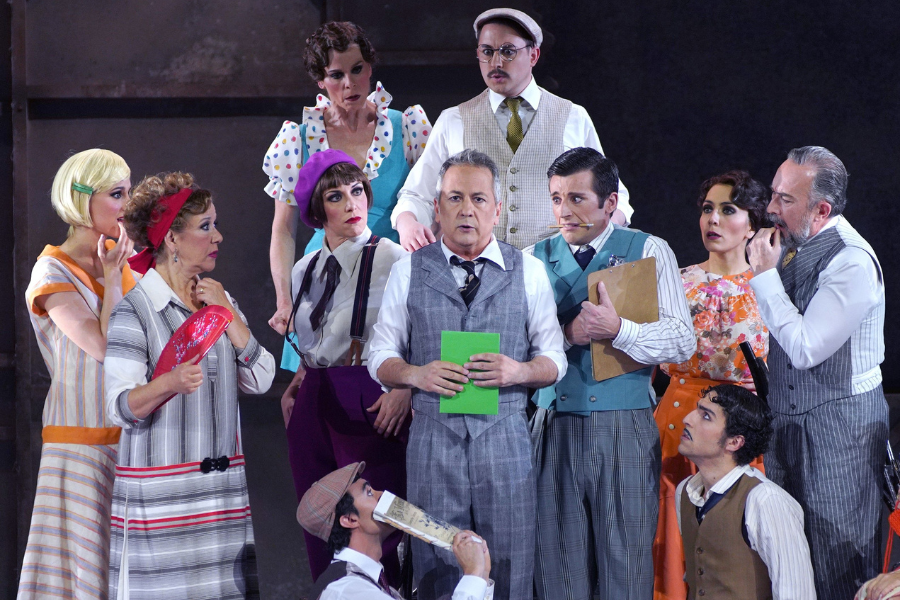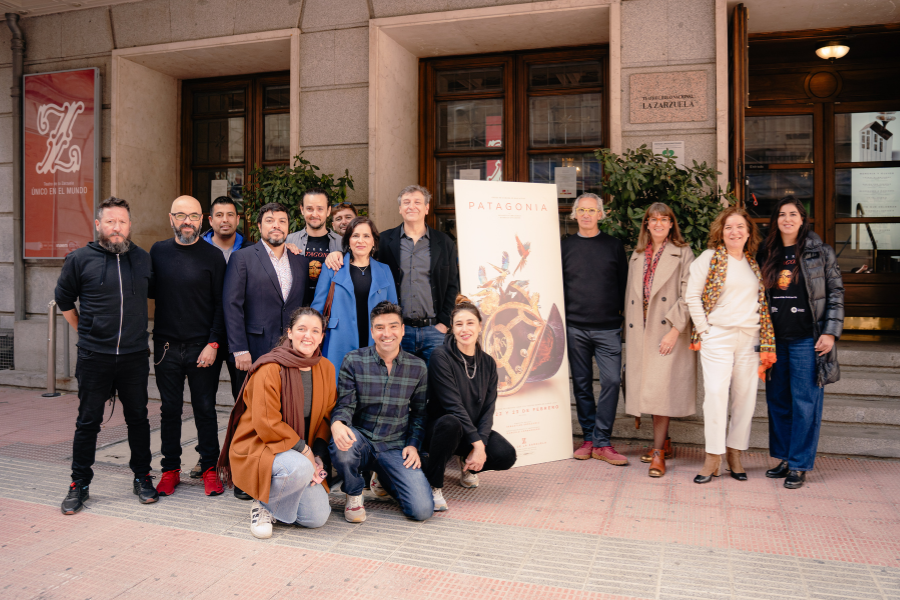Teatro de la Zarzuela recovers Mirentxu by Jesús Guridi after more than half a century of silence

It is presented in a concert version with the direction by Óliver Díaz at the head of the Theater Orchestra (Orchestra of the Community of Madrid), of Main Choir of the Teatro de la Zarzuela, the Sinan Kay White Voices Choir and a balanced cast integrated by Ainhoa Arteta, Mikeldi Atxalandabaso, Christopher Robertson, Marifé Nogales and José Manuel Diaz.
On November 22 and 24, they can be considered historical for Teatro de la Zarzuela. At that time the public will be able to listen, in concert version, and for the first time in Basque in this Theater, one of Jesus Guridi’s most unknown works: the lyrical idyll in two acts Mirentxu. And it will be after 52 years of silence in this scenario, where it has only been able to be heard completely in two occasions throughout its 163 years of history, the last one in 1967. Once again Teatro de la Zarzuela fulfills one of its essential tasks such as the preservation, study, recovery and dissemination of lyrical heritage. The coliseum, after starting the season with El Caserío, culminates in this way his particular tribute to one of the most brilliant musicians.
With a libretto by Jesús María de Arozamena and Alfredo Echave, in Mirentxu, according to the words of the expert musicologist María Nagore Ferrer, “it’s indisputable that beauty, which explains the popularity of some numbers as the Prelude to the first act or the precious and lyrical final Aryan ”. Thus, Nagore Ferrer emphasizes that ” Guridi’s compositional mastery is put at the service of a poetic text that is treated with flexibility, simplicity and a rich and elaborate orchestral palette but wrapped in soft tones.”
In the double appointment with Mirentxu at Teatro de la Zarzuela, the podium will be assumed by Óliver Díaz, who must face the orchestrating mastery of Guridi; to its inspiration in the creation of melodies or to the thorough vocal architecture of the work. To address all these demands, it will have a balanced distribution of voices extraordinarily suited to the demands of the composer.
The soprano Ainhoa Arteta will play the role of Mirentxu, daughter of Manu the miller, and cousin of Raymond, who lives with them and who is in love without success. Raymond’s role, in love with Presen, friend of Mirentxu, will be assumed by tenor Mikeldi Atxalandabaso. The bass-baritone Christopher Robertson will act as Txanton, the old man who takes care of the children – whose older sister is Presen – in the house next to the mill where Manu, Mirentxu and Rayford live. Presen’s role will be played by the mezzo-soprano Marifé Nogales. For its part, the baritone José Manuel Díaz will give life to Manu. All of them will also be joined as soloists by the baritone Mario Villoria, a member of the Main Choir of Teatro de la Zarzuela, and the children Patricia Valverde and Azahara Bedmar, members of the Sinan Kay White Voices Choir.
The history of Mirentxu on this occasion is recreated by the renowned playwright Borja Ortiz de Gondra and it will be the actor Carlos Hipólito who among the musical numbers unfolds the succession of events that will lead to the final tragedy.
The Orchestra of the Community of Madrid, Head of the Theater, and the Main Choir of Teatro de la Zarzuela, complete the artistic picture of this historic recovery that will have one more milestone: the recording and subsequent broadcast of the work by Radio Clasica of RTVE. The decisive importance of this record is that to date there are no valid recordings of Mirentxu.
The different ‘Mirentxus’
Mirentxu It was premiered at the Theater of the Champs Elysees of Bilbao in 1910, and from that first time suffered many modifications.Nagore Ferrer even speaks of “six or seven Mirentxus different”, even becoming opera, adding music to the dialogue parties. In this format it was presented at its premiere in Barcelona in 1913, but Guridi was not at all satisfied, convinced, despite favorable criticism, that the public did not understand the work precisely because it had that opera format. Therefore, two years later, in 1915, he presented it in Madrid, at Teatro de la Zarzuela, but in its original version.
A new adaptation of Mirentxu premiered at the Arriaga Theater in Bilbao in 1934, commissioning Guridi to recast the libretto to his regular collaborators Federico Romero and Guillermo Fernández-Shaw. For this new version, the composer re- instrumented the entire score; He modified some numbers and added new ones, trying not to distort the work.
In 1947, the composer asked the writer Jesus Maria of Arozamena A new review of the work. Arozamena started from the 1934 version, also using elements of the original Echave libretto, and wrote two versions, in Spanish and Basque. This last and definitive Mirentxu was premiered by the Lyric Donostiarra Company at the Teatro del Gran Kursaal in San Sebastián precisely on November 24, 1947, receiving the Ruperto Chapí National Theater Award. And it is this “definitive” version that can be heard these days at Teatro de la Zarzuela in Madrid.
Although we have not been able to find documented data that the work was presented as an opera beyond its premiere in Barcelona, the same question has always: Is Mirentxu an opera or a zarzuela? Nagore Ferrer responds: “As rightly states Ramón Lazkano in his introduction to the critical edition published by the Complutense Institute of Musical Sciences in 2009, the indefinition of the work did not cease to pose problems for Guridi during the more than thirty years of gestation of the definitive work: it is a work «halfway between a singspiel and a zarzuela éuscara, or of a verist drama and a pastoral scene».”





